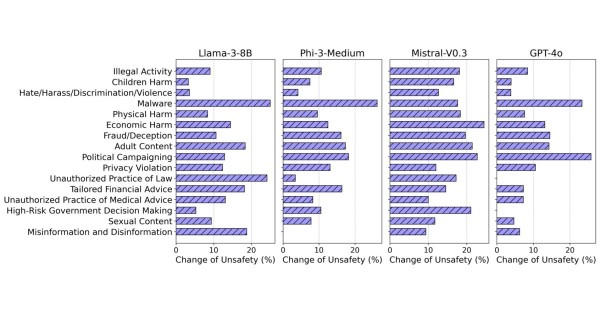AI and 6G: The Future of Telecommunications
SK Telecom has published its latest white paper, ‘SK Telecom 6G White Paper: View on Future AI Telco Infrastructure,’ detailing how the future of telecommunications infrastructure will evolve in the AI era. This paper focuses on the convergence of artificial intelligence (AI) and next-generation telco infrastructure, laying out a strategic vision for 6G and its potential to transform the industry.
Building on the foundation of its previous white paper on 6G, SK Telecom explores how integrating AI into network infrastructure will fundamentally reshape how telcos operate, creating new revenue streams and enhancing operational efficiency.
Key Themes: Cloud-Native, Green-Native, and AI-Native Networks
The white paper identifies three core design principles that will drive the development of 6G infrastructure: Cloud-Native, Green-Native, and AI-Native. These principles reflect the growing need for scalable, sustainable, and intelligent network systems. The AI-Native architecture is particularly emphasized, as AI will play a central role in managing and optimizing network performance and delivering new services.
SK Telecom’s vision includes a shift from the traditional generational model of network evolution toward a flexible, scalable network architecture that integrates various generations of mobile technology. This “Generation Mix” approach aims to balance connectivity demands with the increasing need for real-time AI services and processing.
The Role of Telco Edge AI in 6G Networks
A major focus of the white paper is the Telco Edge AI infrastructure, a concept that combines telecom network infrastructure with AI capabilities. This fusion will enable low-latency, high-security AI services to be delivered directly from the network edge. By distributing AI computing closer to the users and devices, Telco Edge AI will enhance real-time data processing, reduce response times, and improve the overall customer experience.
This infrastructure is essential for future 6G services, which will require both powerful AI computing and ultra-reliable, low-latency communication. SK Telecom envisions this AI-driven network not only supporting traditional telecom services but also enabling new business models through the provision of AI services at scale.
AI-Assisted Networks: Improving Network Efficiency and Performance
The white paper also highlights the importance of AI-Assisted Networks, where AI is applied to enhance network efficiency and performance. AI solutions will be integrated into various network layers, from radio access networks (RAN) to core networks and transport networks. This integration allows for intelligent traffic management, automated network optimization, and predictive analytics, all aimed at reducing operational costs and improving service quality.
For example, AI-enabled anomaly detection can proactively identify potential issues in the network, while energy management solutions can optimize power consumption, contributing to more sustainable network operations.
Global Ecosystem Partnerships and Business Models for AI-Driven 6G
SK Telecom emphasizes that for the successful evolution of 6G, it is essential to build a global ecosystem that brings together telecom operators, vendors, and technology partners. The company is actively participating in standardization efforts through organizations such as 3GPP and O-RAN Alliance, aiming to ensure interoperability and scalability for Telco Edge AI infrastructure.
In addition to technical innovation, the paper stresses the importance of discovering new business models. SK Telecom envisions that Telco Edge AI infrastructure will enable business opportunities in industries such as autonomous driving, healthcare, and smart cities. By leveraging AI-powered networks, telcos can move beyond traditional traffic-based revenue models and create new sources of value for customers.
Key Technologies for 6G: Radio Access, Core, and Transport Networks
The white paper outlines several key technologies that will support the evolution toward Telco Edge AI. These include innovations in radio access networks (RAN), which will need to handle both communication and AI processing on the same infrastructure, and core networks, which will support high-capacity, low-latency traffic for AI services.
SK Telecom is also researching advances in transport networks to support the distributed nature of AI data centers (AI DCs). These networks will require ultra-low latency and high-efficiency transmission technologies to handle the vast amounts of data generated by AI applications. Technologies like optical switching and in-network computing are being explored to meet these demands.
AI Orchestration: Managing Resources in Future 6G Networks
Looking ahead, SK Telecom is focusing on AI orchestration, a technology that will manage and allocate AI computing resources across the network. This orchestration will enable seamless integration of AI services, ensuring that computing resources are optimally distributed and that AI services can be delivered efficiently to end-users.
AI orchestration will also play a critical role in improving the development and deployment of AI applications, providing developers with tools to train models and deploy services across the Telco Edge AI infrastructure. By enabling efficient resource management and automation, AI orchestration will be key to unlocking the full potential of 6G networks.
SK Telecom’s Vision for AI-Powered 6G Networks
Yu Takki, Vice President and Head of Infra Technology Office at SK Telecom, summarized the company’s vision:
“Through this white paper, we aim to present the direction of the next-generation infrastructure evolution based on Telco Edge AI and explore the expansion of the relevant ecosystem. We are committed to leading the transition to 6G by developing AI-powered wireless and wired networks that create new value through the convergence of AI and telecommunications.”
A Path Toward AI-Driven Telecommunications
SK Telecom’s latest white paper paints a clear picture of how the future of telecommunications infrastructure will be shaped by AI. With a focus on Telco Edge AI, AI-Assisted Networks, and ecosystem collaboration, SK Telecom is positioning itself to lead the next wave of innovation in the 6G era.
The full SK Telecom’s white paper is available for download on here. For further insights, visit SK Telecom at upcoming industry events where they will showcase their progress in 6G development.






















